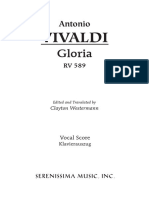0 ratings0% found this document useful (0 votes)
6 viewsREVIEWER
REVIEWER
Uploaded by
Nicole Ann MolinaReviewer on English
Copyright:
© All Rights Reserved
Available Formats
Download as DOCX, PDF, TXT or read online from Scribd
REVIEWER
REVIEWER
Uploaded by
Nicole Ann Molina0 ratings0% found this document useful (0 votes)
6 views2 pagesReviewer on English
Copyright
© © All Rights Reserved
Available Formats
DOCX, PDF, TXT or read online from Scribd
Share this document
Did you find this document useful?
Is this content inappropriate?
Reviewer on English
Copyright:
© All Rights Reserved
Available Formats
Download as DOCX, PDF, TXT or read online from Scribd
Download as docx, pdf, or txt
0 ratings0% found this document useful (0 votes)
6 views2 pagesREVIEWER
REVIEWER
Uploaded by
Nicole Ann MolinaReviewer on English
Copyright:
© All Rights Reserved
Available Formats
Download as DOCX, PDF, TXT or read online from Scribd
Download as docx, pdf, or txt
You are on page 1of 2
REVIEWER
Contemporary art generally refers to art being created art now.
Victor Edades was the first to break the rule of art.
Contemporary art emerged in the Philippines in reaction to social and cultural realities
during 1970’s which is an era of repression and censorship of artistic expressions.
Contemporary is derived from the Latin prefix con, which means “together” or “with”, plus
tempus, which means “time”.
Vicente Manansala painted in abstract cubism his human forms engaged in genre such
as those in market scene.
Cesar Legaspi used his art as a commentary to the state of hard labor in the
Philippines.
Today, hundreds of contemporary artists are found in the 17 regions of the Philippines.
Contemporary art as profession allowed the artist to earn a living through their art
since art and ideas are never free.
Contemporary art for pleasure is a visual delight in the work of art, can take many
forms including an appreciation of beauty od decoration, or delight in an element of
surprise.
Contemporary art as self – expression art that fulfils an expressive function when an
artist conveys information about his or her personality, feelings or worldview.
Contemporary art in Spirituality let the artists create art to express spiritual beliefs
about the destiny of life controlled by the force of higher power.
Contemporary art is not confined to the Museum. They are also found in galleries,
art school, side streets and public spaces like train or bus station, shopping centers or
parks.
Many Contemporary Artist are self-taught and did not have a formal education.
Originality is an issue in Contemporary Art. An artist can’t get another artist work.
Contemporary art as Remembrance. Art can be a remembrance which is something
done as an aid to memory.
Fernando Amorsolo is the first National Artist in the country and was known for using
backlighting technique in painting, making his creation bright and cheerful.
Guillermo E. Tolentino was honored as the National Artist for sculpture in 1973 and
was known for designing the seal of the Republic of the Philippines, and gold and bronze
medals for Ramon Magsaysay award.
Carlos “botong” Francisco - He revived the art of mural, was considered to be the
most distinguished mural painter for about three decades and was known for using
historical events as subject matter for his murals.
Benedicto Cabrera - He is known as “bencab” and noted as the best-selling painter of
his generation of Filipino artist.
Elizalde Navarro - He was known for his hardwood masks reflecting human and the
animal, abstract paintings in oil and watercolor, and assemblages.
Carlos Quirino - He is the first and so far, the only National Artist for Historical
Literature and was also known for writing “The Great Malayan”, which considered to be
the one of the earliest biographies of Jose Rizal
Nick Joaquin - He is considered as the most distinguished Filipino writer in English
writing. His body of works extends from short stories to poems to essays which includes
journalism and reportage.
F. Sionil Jose - He is one of the most widely read Filipino writers who founded the
Philippine chapter of the international organization PEN.
Virgilio S. Almario - He is also known as Rio Alma, who is among the notable
modernist poets. He reinvented the traditional Filipino poetry forms.
Carlos P. Romulo - He is noted as a diplomat and an awarded journalist. He is the first
Asian President of the United Nations General Assembly, and the only Asian to win the
Pulitzer Prize in journalism for his articles on the World War II.
Lamberto V. Avellana - He was tagged as the “The Boy Wonder of Philippine Movies”
as early as 1939.
Eddie S. Romero - He is screenwriter, film director and producer who is behind the
Filipino classics such as “Ganito kami noon, Paano kaya ngayon?”.
Manuel Conde - He is known for producing and directing films based on old Filipino
tales such as Juan Tamad, Ang Ibong Adarna.
Ishmael Bernal - He was hailed by the critics as “The Genius of the Philippine Cinema,”.
He is known for directing films that projects the realities of Filipinos.
Gerardo De Leon - He is a prominent film maker in the 50’s and 60’s producing classics
such as “Daigdig ng mga Api,” “Noli me Tangere,” “El Filibustirismo,” “Dyesebel” and
“Sisa”.
You might also like
- Digitopolis II: Creation of Videogames With GDevelopDocument137 pagesDigitopolis II: Creation of Videogames With GDevelopjosedavidcuartas100% (4)
- History of Visual Arts in The PhilippinesDocument23 pagesHistory of Visual Arts in The PhilippinesCrisencio M. Paner60% (5)
- National Artists of The PhilippinesDocument62 pagesNational Artists of The Philippinesmark100% (1)
- Mexican Painters: Rivera, Orozco, Siqueiros, and Other Artists of the Social Realist SchoolFrom EverandMexican Painters: Rivera, Orozco, Siqueiros, and Other Artists of the Social Realist SchoolNo ratings yet
- Cheer DanceDocument3 pagesCheer DanceRosaAlyannaAntonino100% (3)
- Art App Report ScriptDocument5 pagesArt App Report ScriptGrace Chavez ManaliliNo ratings yet
- National Artist For Visual ArtsDocument37 pagesNational Artist For Visual ArtsSmartsoft LibraryNo ratings yet
- Pambansang Alagad NG Sining NG PilipinasDocument22 pagesPambansang Alagad NG Sining NG PilipinasglaizamaedesoyoNo ratings yet
- Philippine National Artists - (Intro., Visual Arts, Painting & FashionDocument92 pagesPhilippine National Artists - (Intro., Visual Arts, Painting & FashionJulie Ann EstradaNo ratings yet
- Learning Activity Sheet Order of National ArtistsDocument9 pagesLearning Activity Sheet Order of National ArtistsFaith MirandillaNo ratings yet
- Extra Information in NATIONAL ARTISTDocument4 pagesExtra Information in NATIONAL ARTISTJan Mae EstaresNo ratings yet
- ContempoDocument4 pagesContempoPrincess Jonette YumulNo ratings yet
- Report (Pauline)Document82 pagesReport (Pauline)Pauline Elisse BustamanteNo ratings yet
- Lesson 5: National Artists and Their Contributions To Particular Areas: Visual ArtsDocument24 pagesLesson 5: National Artists and Their Contributions To Particular Areas: Visual ArtsShiela SantosNo ratings yet
- National Artists of The Philippines: VISUAL ARTS (Paintings)Document41 pagesNational Artists of The Philippines: VISUAL ARTS (Paintings)Abby SevillaNo ratings yet
- The National Artists of The Philippines For Visual ArtsDocument38 pagesThe National Artists of The Philippines For Visual ArtsNovie CalunsagNo ratings yet
- National ArtistsDocument14 pagesNational ArtistsFathma Zyann E. CasanNo ratings yet
- Group 1 Cpar Lesson 8Document34 pagesGroup 1 Cpar Lesson 8Sirr JeffNo ratings yet
- The National Artists of The Philippines Painting Contemporary Period ThemesDocument21 pagesThe National Artists of The Philippines Painting Contemporary Period Themestravis slothNo ratings yet
- Group 3 CparDocument68 pagesGroup 3 Cparpste oyNo ratings yet
- Cpar 4Document84 pagesCpar 4cannorlanes2020No ratings yet
- ART App.2 Lesson2.3Document26 pagesART App.2 Lesson2.3Alliah Mari Pelitro BairaNo ratings yet
- CPAR LectureDocument3 pagesCPAR Lectureエスゲラ ミエル エンゼルNo ratings yet
- PDF. q1 Different Art StylesDocument22 pagesPDF. q1 Different Art StylesSaturnino GarciaNo ratings yet
- Famous Filipino PaintersDocument11 pagesFamous Filipino PaintersJan Mikel Riparip0% (1)
- Lesson 7 Pointers National Artist of The PhilippinesDocument16 pagesLesson 7 Pointers National Artist of The PhilippinesAmalia OlorocisimoNo ratings yet
- Visual Arts in The Philippines (Learning Material)Document11 pagesVisual Arts in The Philippines (Learning Material)Migz ManalotoNo ratings yet
- Arts ProjectDocument25 pagesArts ProjectSarah Hallig Cayabyab100% (1)
- Contemporary Arts in The PhilippinesDocument25 pagesContemporary Arts in The Philippinesshena mae acotNo ratings yet
- Op 10 Philippine Artists That Have Greatly Influenced The Philippine Culture and SocietyDocument9 pagesOp 10 Philippine Artists That Have Greatly Influenced The Philippine Culture and SocietyCruz L AntonioNo ratings yet
- Contemporary ArtsDocument6 pagesContemporary ArtsFrancis Miko ManlangitNo ratings yet
- American RegimeDocument2 pagesAmerican RegimeJannel SanielNo ratings yet
- Lesson 3 National Artist Visual ArtsDocument32 pagesLesson 3 National Artist Visual ArtsBurner nga Lang toNo ratings yet
- Module 3Document4 pagesModule 3Jericho CunananNo ratings yet
- Åfernando Amorsolo: Sample WorksDocument6 pagesÅfernando Amorsolo: Sample WorksHart BrainNo ratings yet
- MasangkayDocument33 pagesMasangkayMacahia JomarNo ratings yet
- Philippine Artist Roles and Contribution To Philippine DanceDocument6 pagesPhilippine Artist Roles and Contribution To Philippine DanceLorraine RaguindinNo ratings yet
- Reporting Socsci 1 06 03 2023Document9 pagesReporting Socsci 1 06 03 2023Lykka Pearl BateNo ratings yet
- Lyceum of The Phlippines University ETEEAP General Education Requirement For HumanitiesDocument7 pagesLyceum of The Phlippines University ETEEAP General Education Requirement For HumanitiesCristopher Romero DanlogNo ratings yet
- Filipino ArtistsDocument6 pagesFilipino ArtistsMary jane SisonNo ratings yet
- Notes-Q3-Module 3-4Document5 pagesNotes-Q3-Module 3-4Cherry DelicaNo ratings yet
- Philippine ArtDocument10 pagesPhilippine ArtAubrey Merino100% (3)
- Contemporary Philippine Arts From The Regions: SocietyDocument3 pagesContemporary Philippine Arts From The Regions: SocietyJerlyn Mae Sales QuiliopeNo ratings yet
- CPAR Week 3 HandoutsDocument6 pagesCPAR Week 3 HandoutsVenus AriateNo ratings yet
- CpaDocument42 pagesCpaKeneth CandidoNo ratings yet
- National Artist For Visual Arts Table 3 12stemDocument8 pagesNational Artist For Visual Arts Table 3 12stemChris P. PolloNo ratings yet
- Top 10 Philippine ArtistsDocument9 pagesTop 10 Philippine ArtistsRenel EbuengNo ratings yet
- 10 Filipino Painters Who Shaped The PhilippinesDocument20 pages10 Filipino Painters Who Shaped The PhilippinesCj Love AstudilloNo ratings yet
- ArtworksDocument9 pagesArtworksLaurence GerardoNo ratings yet
- Henri Bernard Goet Z: Cesar LegaspiDocument2 pagesHenri Bernard Goet Z: Cesar LegaspiGerald ValentinNo ratings yet
- Red Brick Illustration Museum Visit Study Tour Report PresentationDocument50 pagesRed Brick Illustration Museum Visit Study Tour Report PresentationMary Keithleen BigcasNo ratings yet
- Contempo Week 4 .PPTX Revised 2Document92 pagesContempo Week 4 .PPTX Revised 2Shiela FernandoNo ratings yet
- History of ArtDocument4 pagesHistory of ArtWilliam Vincent SoriaNo ratings yet
- April 24, 1972) Was One of The Most: Carlos V. Francisco (November 4, 1912Document3 pagesApril 24, 1972) Was One of The Most: Carlos V. Francisco (November 4, 1912Riezel GalangNo ratings yet
- National ARTIST IN VISUAL ARTSDocument22 pagesNational ARTIST IN VISUAL ARTSfauzi villegasNo ratings yet
- National Artist of The PhilippineDocument9 pagesNational Artist of The PhilippineRico BartolomeNo ratings yet
- Fernando AmorsoloDocument10 pagesFernando AmorsoloTABLAC, Abegail AgpaloNo ratings yet
- National Artists and Their Contributions To Particular AreasDocument47 pagesNational Artists and Their Contributions To Particular AreasMiaka Lee60% (10)
- Art Appreciation Flip ChartDocument10 pagesArt Appreciation Flip ChartzshaninajeorahNo ratings yet
- Filipino Painters and Their MasterpiecesDocument80 pagesFilipino Painters and Their MasterpiecesMarjorie Aduana82% (11)
- 10 Famous Filipino ArtistsDocument6 pages10 Famous Filipino ArtistsMark Cristian SaysonNo ratings yet
- All Tenses 4Document2 pagesAll Tenses 4Analía ScozzariNo ratings yet
- A Reinvention of Realism in Raymond CarverDocument17 pagesA Reinvention of Realism in Raymond Carverrociogordon100% (1)
- Adobe Scan Mar 21, 2024Document3 pagesAdobe Scan Mar 21, 2024ramNo ratings yet
- ALTASDocument3 pagesALTASEsther DomínguezNo ratings yet
- Immigration To Australia Application GuideDocument43 pagesImmigration To Australia Application Guideoscar castillo liberatoNo ratings yet
- Introduction To Music Production - Week 2 Assignment PDFDocument10 pagesIntroduction To Music Production - Week 2 Assignment PDFjrdpastorsNo ratings yet
- Polybutadiene RubberDocument2 pagesPolybutadiene RubberJiraporn LeeratNo ratings yet
- Travel Reservation August 18 For FREDI ISWANTODocument2 pagesTravel Reservation August 18 For FREDI ISWANTOKasmi MinukNo ratings yet
- BN68-15687F-01 - Leaflet-Remote - Y23 QLED QD CU8 LS03 - TK SQ - L05 - 230609.0Document2 pagesBN68-15687F-01 - Leaflet-Remote - Y23 QLED QD CU8 LS03 - TK SQ - L05 - 230609.0batuhanoyalNo ratings yet
- Growing Home - Stories of Ethnic GardeningDocument209 pagesGrowing Home - Stories of Ethnic GardeningChris Morgan100% (1)
- VJJVJVJDocument7 pagesVJJVJVJAnirudh KawNo ratings yet
- Partituur Gloria RV 589 Vivaldi 240608 001145Document80 pagesPartituur Gloria RV 589 Vivaldi 240608 001145avrilarmybts2013No ratings yet
- Phil Morse (Morse, Phil) - Rock The Dancefloor - The Proven Five-Step Formula For Total DJing Success-Rethink Press (2016)Document153 pagesPhil Morse (Morse, Phil) - Rock The Dancefloor - The Proven Five-Step Formula For Total DJing Success-Rethink Press (2016)James Johnson100% (1)
- Second Life Ranker-300-319Document20 pagesSecond Life Ranker-300-319JackFrostinNo ratings yet
- Korea Prodexpo 19Document2 pagesKorea Prodexpo 19vanNo ratings yet
- Tapes and Caliper DefDocument2 pagesTapes and Caliper DefmaloyNo ratings yet
- Spark V ExpDocument5 pagesSpark V ExpyogeshNo ratings yet
- Crochet Beanie PatternDocument2 pagesCrochet Beanie Patterndchammer3171No ratings yet
- (Math 6 WK 5 L9) - Problems Involving Addition and or Subtraction of DecimalsDocument43 pages(Math 6 WK 5 L9) - Problems Involving Addition and or Subtraction of DecimalsRhea OciteNo ratings yet
- Easy Coloring Page - Google SearchDocument1 pageEasy Coloring Page - Google SearchsarahmahabareeraNo ratings yet
- SECTION A: Guided Writing: You Are Advised To Spend About 40 Minutes On This QuestionDocument4 pagesSECTION A: Guided Writing: You Are Advised To Spend About 40 Minutes On This QuestionKhairiah YusofNo ratings yet
- The PIXMA TS5050Document2 pagesThe PIXMA TS5050Mr. ZaiNo ratings yet
- Paper Towns Choice BoardDocument2 pagesPaper Towns Choice Boardapi-454012608No ratings yet
- Rhythm of Modern Music PDFDocument352 pagesRhythm of Modern Music PDFleringurd100% (1)
- CoreTemp DumpDocument20 pagesCoreTemp DumpAdemir KalacNo ratings yet
- Hansen 103Document4 pagesHansen 103PalpakNo ratings yet
- Standing Yoga AsanasDocument5 pagesStanding Yoga AsanasmangaldasNo ratings yet
- Elements of Music PresentationDocument18 pagesElements of Music PresentationDaniel ShinNo ratings yet

























































































